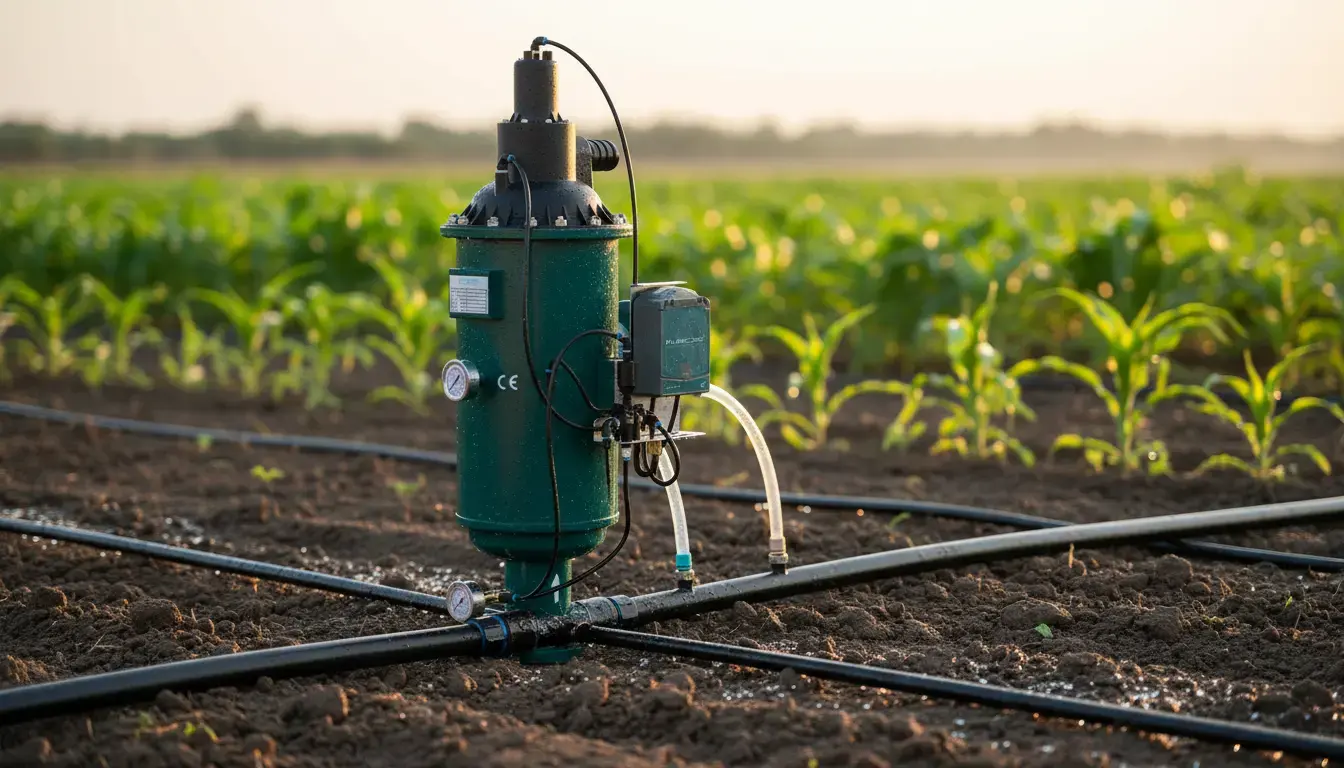The Silent Hero of Efficient Agriculture: The Critical Role of Filtration in Irrigation Systems
The secret to productivity in agricultural production lies in using every drop of water in the most effective way. Delivering clean, balanced, and uninterrupted water to plant roots directly affects both the quality and quantity of the harvest. However, naturally occurring particles in water sources—such as sand, silt, and algae—pose a serious threat to modern irrigation systems. These particles can damage sensitive equipment and hinder plant growth.
This is where filtration steps in—not as a luxury, but as a fundamental pillar of modern agriculture. A properly designed filtration system is not just a cost item; it is a strategic investment that extends system lifespan, increases efficiency, and protects valuable water resources.
In this article, we take a detailed look at why filtration is vital for agricultural irrigation and how you can choose the most suitable filter for your system.
The Benefits of Proper Filtration: A Return on Your Investment
An effective filtration system delivers concrete advantages to your operations:
- Prevents System Clogging for Continuous Operation: Filters capture even the smallest particles that can clog drippers, micro-sprinkler nozzles, and sprinkler heads. This ensures uniform water distribution across the entire field.
- Extends Equipment Lifespan: Abrasive particles in water cause gradual wear on pumps, valves, and other sensitive irrigation components. Filtration protects these parts, preventing costly repairs or replacements.
- Improves Water Quality: By removing suspended solids, organic particles, and algae, filters ensure plants receive cleaner and healthier water.
- Supports Plant Health and Uniform Growth: Clean water reduces disease risk in the root zone and improves nutrient uptake. As a result, plant development becomes more uniform throughout the field.
- Ensures Maximum Irrigation Efficiency: A clog-free system operates at its designed pressure and flow rate. This allows water to reach the targeted area efficiently, minimizing losses due to evaporation and surface runoff.
- Reduces Labor and Maintenance Costs: Instead of manually cleaning clogged nozzles or repairing damaged components, maintaining only the filter saves significant time and labor.
- Contributes to the Conservation of Water Resources: Efficient irrigation prevents unnecessary water use and supports the sustainable management of this precious resource.
Step-by-Step Filter Selection: Finding the Best Solution for Your System
Choosing the right filter requires analyzing several critical factors:
1. Analyze the Characteristics of Your Water Source
The first and most important step in filter selection is identifying the types of contaminants in your water source.
- For Large and Floating Debris (Leaves, Algae, Floating Objects): Suction Strainers
Installed on the pump suction line for open water sources such as rivers, lakes, and ponds, these strainers capture large particles to protect both the pump and the main filter. - For Heavy Particles (Sand, Silt, Gravel): Hydrocyclone Filters
Especially effective in sand-containing sources like well water, hydrocyclones use centrifugal force to separate heavy particles with high efficiency. Their low-maintenance design reduces the load on the main filter. - For Organic Matter and High Contamination Levels: Media (Sand–Gravel) Filters
For challenging water sources with high levels of algae, clay, or organic matter, multilayer media filters provide deep and effective filtration. - For Fine Filtration After Pre-Filtering: Disc and Screen Filters
After the pre-filtration steps above, disc or screen filters deliver the final level of precision needed depending on your irrigation method. These filters may be manual, semi-automatic, or fully automatic.
2. Identify the Technical Parameters
- System Flow Rate (Capacity): The selected filter must comfortably handle your irrigation system’s maximum required flow rate. Consider the filter’s recommended flow rate (m³/hour) for clog-free operation.
- Required Filtration Degree:
The correct micron/mesh level varies depending on your irrigation method—drip, micro-sprinkler, sprinkler, or pivot. Always consult your sales representative to choose the safest and most suitable filtration precision. - Operating Pressure Range: Filters require a minimum pressure to function properly. Automatic filters, in particular, need adequate system pressure for backwashing. Ensure the filter matches your system’s maximum and minimum pressure values.
- Automation Level and Maintenance Needs:
- Manual Filters: Cost-effective for small-scale systems where periodic manual cleaning is acceptable.
- Automatic (Self-Cleaning) Filters: Eliminate labor costs and provide uninterrupted water flow—ideal for large-scale operations.
- Material Quality and Durability: The filter’s body material must be suitable for the water’s chemical structure (acidic/alkaline) and operating conditions. Corrosion-resistant carbon steel, stainless steel, or high-quality plastic materials ensure long-lasting performance.
Conclusion: The Smartest Investment in Efficiency
Filtration is not just one component of an irrigation system—it is the foundation of efficiency and sustainability. A properly engineered filtration system with regular maintenance prevents clogging, extends the lifespan of valuable equipment, and improves the quality of the water that nourishes crops.
As water becomes an increasingly precious resource, investing in the right filtration system is one of the smartest decisions for farmers, businesses, and the future of our planet.


